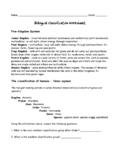Transcription of Platypus Husbandry Manual - Australasian Zoo …
1 Platypus Ornithorhynchus anatinus Captive Husbandry Guidelines CONTRIBUTORS Stephen Jackson Healesville Sanctuary Leslie Fisk Healesville Sanctuary Norm Holland Healesville Sanctuary Melody Serena Healesville Sanctuary1 David Middleton Healesville Sanctuary2 1 Present Address Australian Platypus Conservancy, PO Box 84, Whittlesea Victoria 3757. 2 Present Address Mount Mary Vineyard, Coldstream West Road, Coldstream Victoria 3777. M&MSG Low Risk. ASMP Category: 4. iTable of Contents 1. Introduction .. 4 2. Taxonomy .. 5 Nomenclature .. 5 Subspecies .. 5 Other Common Names .. 5 3. Natural History .. 5 Morphometrics .. 5 General Description .. 6 Distribution .. 6 Habitat .. 6 Wild Diet and Feeding Behaviour .. 6 Longevity .. 7 Wild .. 7 Captivity .. 7 4. Housing Requirements .. 7 Exhibit Design .. 7 Holding Area Design.
2 10 Weather Protection .. 11 Substrate .. 11 Enclosure Furnishings .. 12 Spatial Requirements .. 12 Interspecific Compatibility .. 18 Intraspecific Compatibility .. 18 5. Handling and Transport .. 12 Handling Procedure .. 12 Catching Bags .. 14 Weighing and Examination .. 14 Release .. 14 Transport Requirements .. 14 6. Health Requirements .. 15 Routine Health Checks .. 15 Tail Volume Index (TVI) .. 15 Blood Samples .. 15 Known Health Problems .. 16 Bacteria .. 16 Viruses .. 16 Protozoans .. 16 Metazoan Endoparasites .. 17 ii7. Behaviour .. 17 Habits .. 17 Captive Behavioural Problems .. 17 Behavioural Enrichment .. 17 Signs of Stress in Captive Platypus .. 18 8. Captive Dietary Requirements .. 19 Captive Diet .. 19 Supplements .. 20 Presentation of Food .. 20 Estimating the Amount of Food Consumed .. 20 Food Provided in Display Tanks.
3 20 Food Provided in Off-Display Tanks.. 20 9. General Husbandry .. 21 Hygiene and Cleaning .. 21 Daily Records .. 22 Facilities That Handle Platypus Daily .. 22 Facilities That Do Not Handle Platypus Daily .. 22 Marking Techniques .. 23 10. Breeding .. 23 Breeding System .. 23 Timing of Breeding .. 23 Age at First Breeding .. 23 Wild .. 23 Captivity .. 23 Ability to Breed Every Year .. 24 Ability to Breed More Than Once Per Year .. 24 Breeding Behaviour .. 24 Nesting Requirements .. 25 Breeding Diet .. 27 Gestation and Incubation Periods .. 27 Litter Size .. 27 Growth and Age Determination .. 27 Age at Weaning .. 29 11. Artificial Rearing .. 29 Housing .. 29 Temperature Requirements .. 30 Diet .. 30 Specific Requirements .. 31 Identification Methods .. 32 Hygiene and Special Precautions .. 32 Behavioural Considerations.
4 32 Weaning .. 32 Rehabilitation Procedures .. 32 iii12 Acknowledgments .. 33 13. References .. 33 14. Bibliography .. 36 APPENDIX 1 - VETERINARY PROCEDURES .. 38 APPENDIX 2 - RESCUE ENQUIRIES .. 41 APPENDIX 3 - BRINGING Platypus IN FROM THE WILD .. 48 APPENDIX 4 - INTRODUCING Platypus TO UNFAMILIAR FACILITIES AND/OR OTHER Platypus .. 50 APPENDIX 5 - RELEASE BACK INTO THE WILD .. 51 APPENDIX 6 - SUMMARY AND RECOMMENDATIONS .. 52 41. Introduction The Platypus and the two species of echidnas, which make up the monotremes are arguably the most unique mammals and are of enormous community and scientific interest. In particular, the unique features and secretive lifestyle of the Platypus have made it a longstanding focus of attention. Platypus have been found in Australia as fossils as far back as 130 million years old (Strahan 1995).
5 In 1992 fossil Platypus teeth were discovered in Patagonia, in South America, which date back to approximately 60 million years of age, reflecting a Gondwanan distribution of monotremes (Strahan 1995). Although fossil Platypus had well-developed teeth, the modern Platypus only has milk teeth which are shed when weaned and replaced in the adult by hard horny plates which are used to crush their prey. Platypus exhibits and Platypus management across Australian institutions are very similar, however alternative approaches are continually being developed and used as further information on Platypus Husbandry and biology becomes available. Captive management of Platypus has an essential role to play in biological research as well as conservation-based educational displays. At the same time, the perceived poor survival of captive Platypus has generated concern amongst managers, researchers, conservationists and the general community.
6 Accordingly, there is a need to ensure that impeccable standards for captive management of Platypus are developed. Whilst many standards may be universally applicable it would be false to say that we have the definitive recipe for exhibiting, maintaining and breeding Platypus in captivity. In order to ensure the best possible standard of captive management, ARAZPA, via its Monotreme and Marsupial Taxon Advisory Group, has developed a series of guidelines relating to captive Platypus . These guidelines are based on successful practices in operation within our zoos. The foundation of this work is the Healesville Sanctuary, Guidelines for Platypus Management (Middleton and Serena 1991). The protocols outlined in this document are written for the following purposes: 1) To provide a series of written procedures and standards in the areas of Platypus Husbandry and veterinary management, as examples in use and as benchmarks against which performance can be measured.
7 2) To establish standardised systems of data collection and analysis in order to facilitate routine monitoring of animals and their captive environments and contribute to further refinement of management protocols. 3) To encourage a co-ordinated approach among captive managers with respect to developing and adopting industry-wide policies and standards for captive Platypus management. 5 All protocols are written with the expectation that: 1) They should be improved and modified as knowledge and experience accumulates. 2) Many people will ultimately contribute to the development of a comprehensive management Manual for captive Platypus . As well as the ARAZPA Monotreme and Marsupial TAG Guidelines, several other reviews of the maintenance of Platypus in captivity have been conducted (Carrick et al. 1982; Krueger et al. 1992). This document is meant to further expand this process by combining information on the successful management of Platypus in captivity so that more universal techniques can be adopted.
8 2. Taxonomy Nomenclature Class : Mammalia Order : Monotremata Family : Ornithorhynchidae Genus Species : Ornithorhynchus anatinus Etymology Ornithorhynchus - means bird snout. anatinus means of ducks. Platypus means flat foot. The Platypus was originally described as Platypus anatinus by Shaw in 1799. However as that name was already used for a genus of beetles, the term Ornithorhynchus was used which is the name used by Blumenbach (1800) to describe the Platypus when he called it Ornithorhynchus paradoxus. Subspecies None. Other Common Names None. 3. Natural History Morphometrics Size varies with location with a general north to south cline variation in body size, with the smallest animals being found in Queensland and the largest ones found in New South Wales West of the Divide and Tasmania (Strahan 1995; Connolly & Obendorf 1998). Length is measured from tip of bill to tip of tail (Carrick 1995) (Table 1).
9 There is a distinct sexual dimorphism with males being larger and heavier than females. The Platypus is easily distinguished from all other mammals due to its soft flexible bill, webbed feet and aquatic lifestyle. 6 Table 1. Body Length and Weight for Different Locations in Australia. Figures from Carrick (1995). Location Length (cm)Weight (g) MalesFemalesMalesFemalesNorth Queensland 1018 208 704 49 South-east Queensland 1556 194 1222 94 New South Wales East of Divide 1434 218 857 107 New South Wales On Divide 1379 132 888 92 New South Wales West of Divide 29 2215 364 2000 Tasmania 1900 1500 General Description The Platypus is one of Australia s most easily recognisable animals.
10 They are approximately 40-50cm long, have a dense waterproof fur over all of its body except the bill and feet, and a bill that is soft and pliable. It has webbed feet and the males possess a venomous spur on the inside of their hind legs. Distribution The Platypus occurs in freshwater streams along the east coast of Australia from north Queensland to South Australia and Tasmania (Fig. 1). It also occurs in streams running westward from the Great Dividing Range. Figure 1. Distribution of the Platypus Habitat The Platypus occurs in freshwater and occasionally brackish streams, creeks, lakes and ponds. These vary from shallow creeks with pools and riffles to large deep rivers. When out of the water, Platypus live in burrows which are dug into the bank of the water body. Burrows are usually short and simple in construction with the entrance either above or below the water level, and often under a tangle of tree roots (Carrick 1995).








